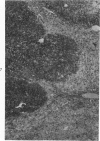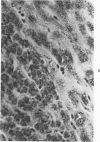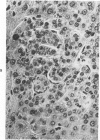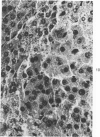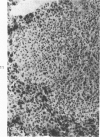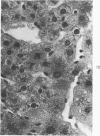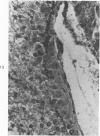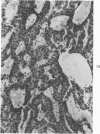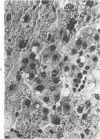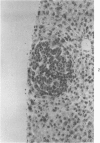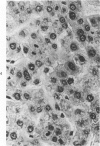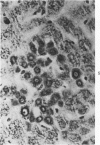Abstract
Spontaneous hepatomas and hepatic preneoplastic changes were observed in sand rats (Psammomys obesus) from two colonies. Both colonies originated from 10 sand rats captured in the Judean desert in 1969. At the age of 6 months, and increasing in multiplicity with advancing age, histologic examination revealed nodules containing hepatocytes characterized by hyperbasophilia, accumulation of glycogen, eosinophilic cytoplasm, or a mixture of these cells. In animals over 25 months old hepatocellular carcinoma was diagnosed. The histologic changes described here were reported to be characteristic of chemical hepatomagenesis in rats. No external chemical carcinogen could be demonstrated in our animal colonies, and a hereditary predisposition to tumor formation is presumed. Identity of hepatic carcinogenesis, irrespective of etiology in distantly related rodents, ie, the laboratory rat and the sand rat, which in reality is a gerbil, supports the assumption of the existence of a general law governing hepatic carcinogenesis.
Full text
PDF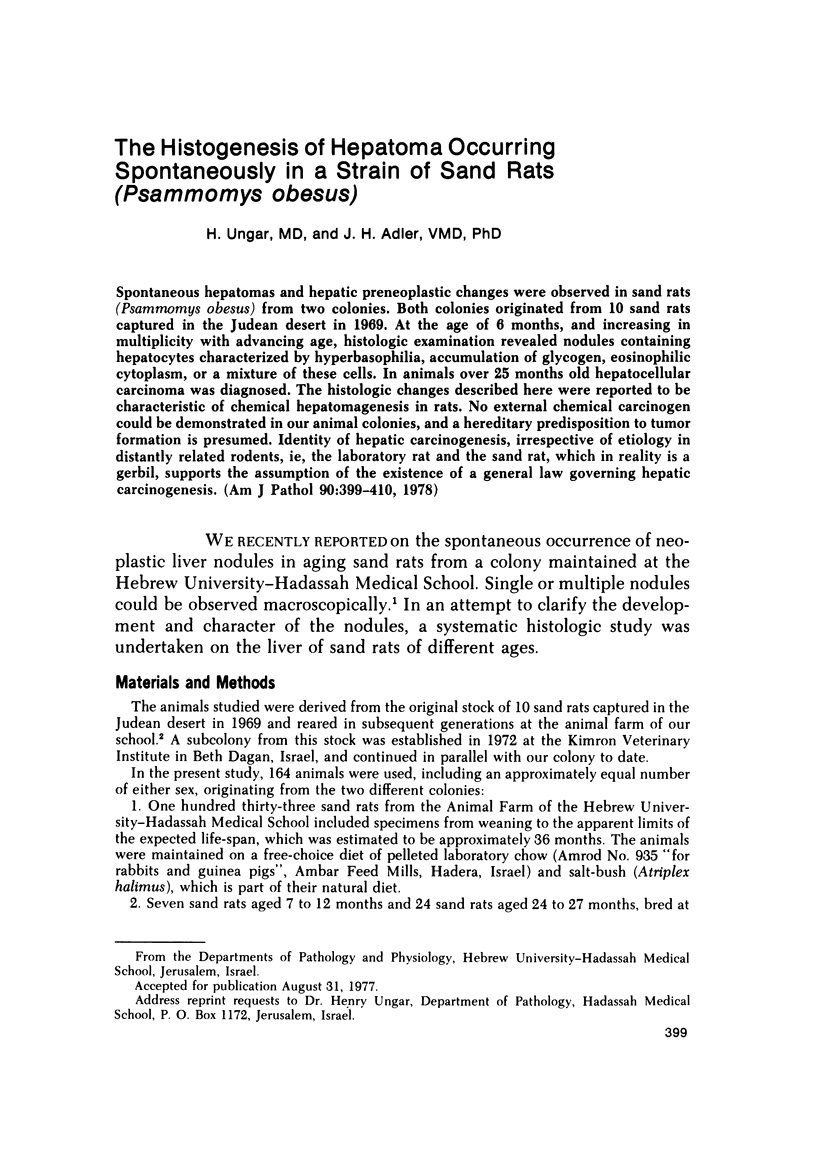
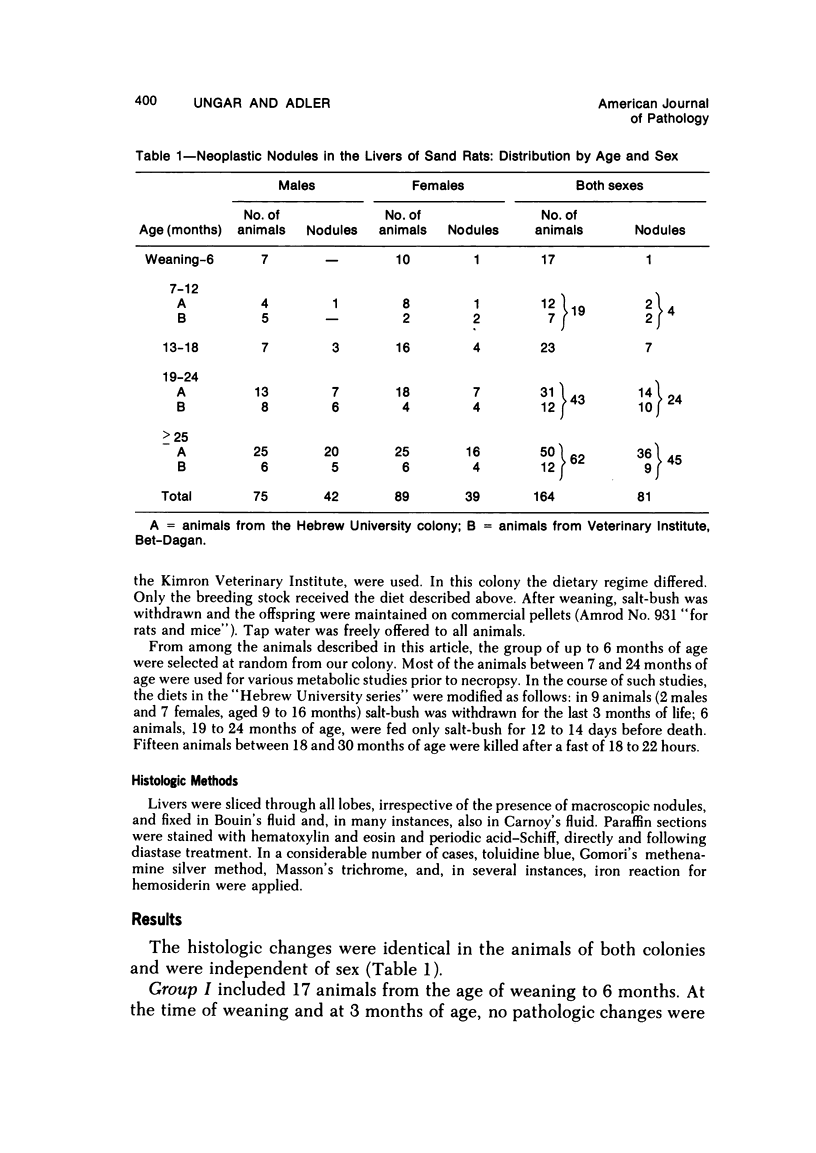
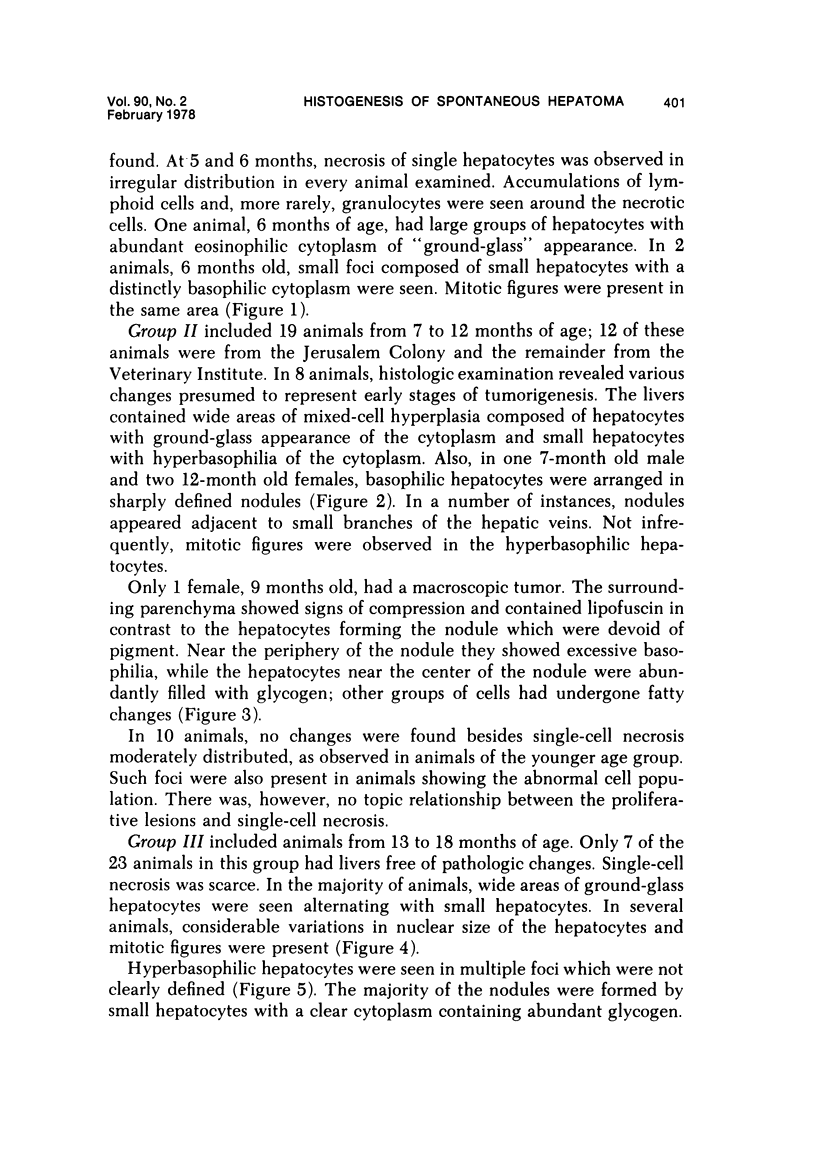
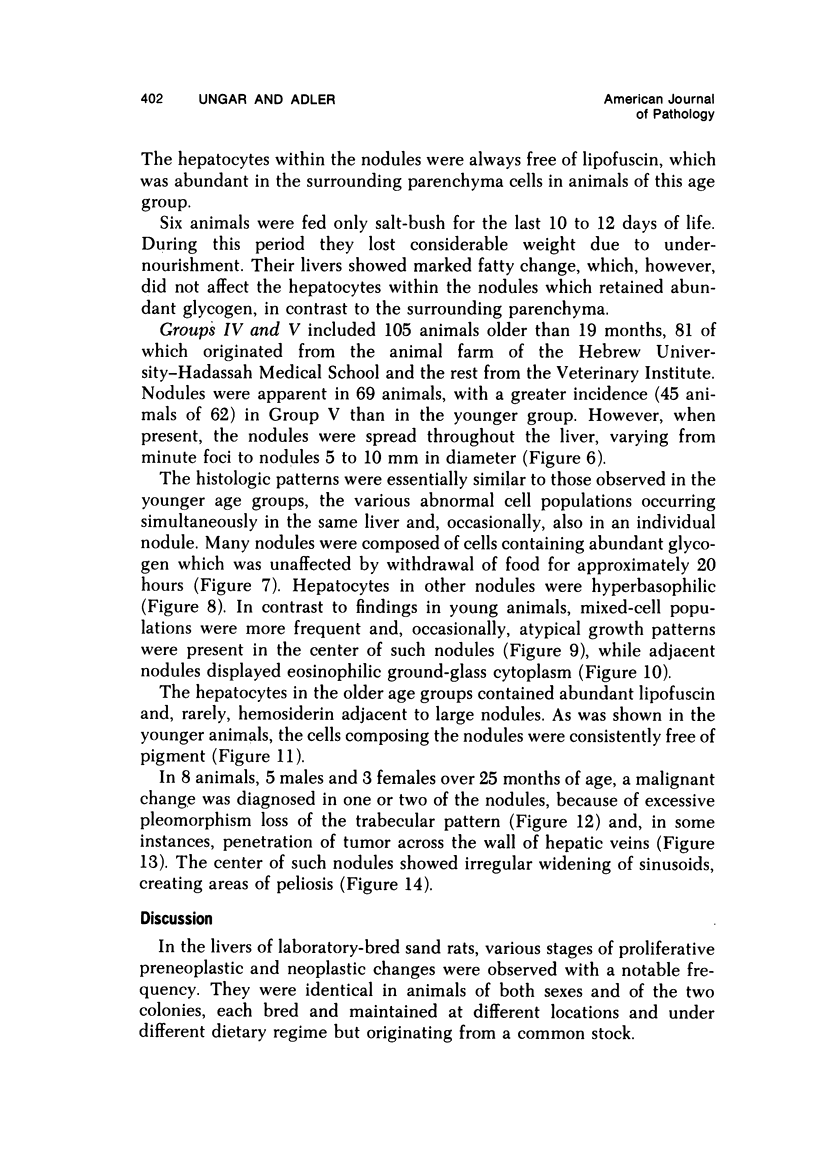
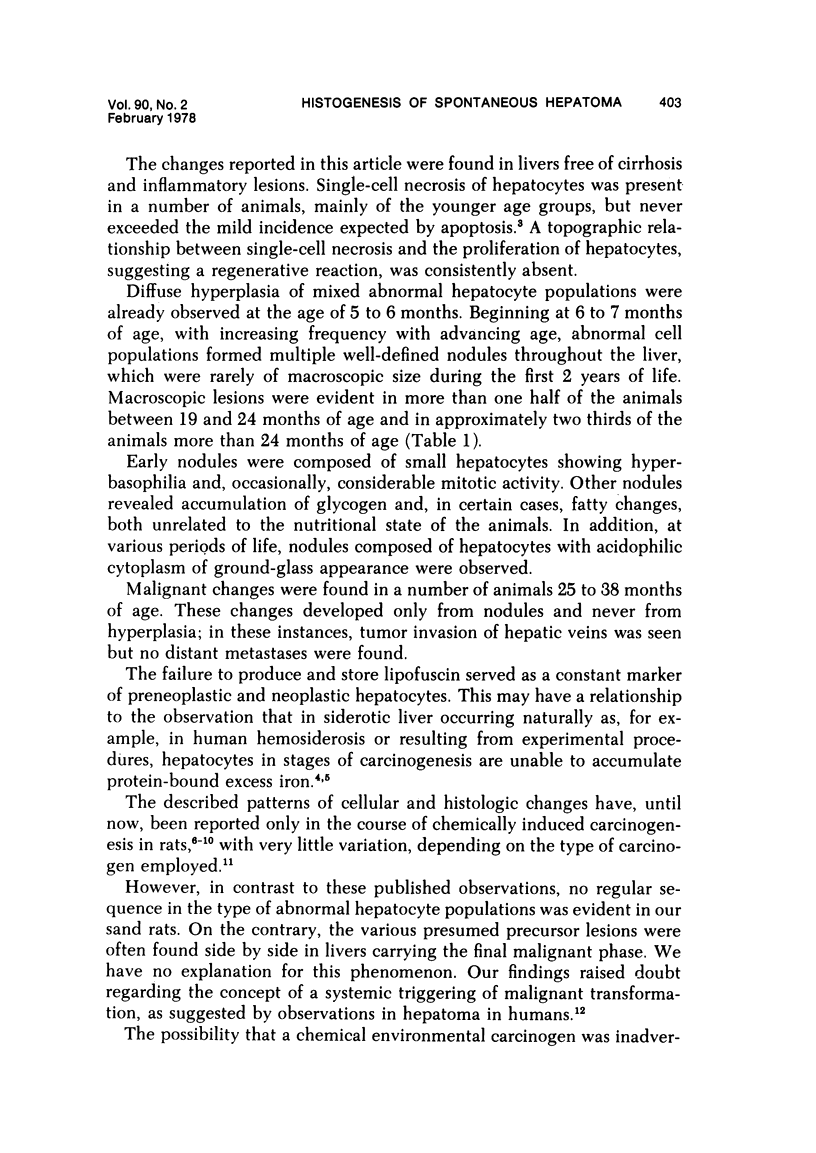
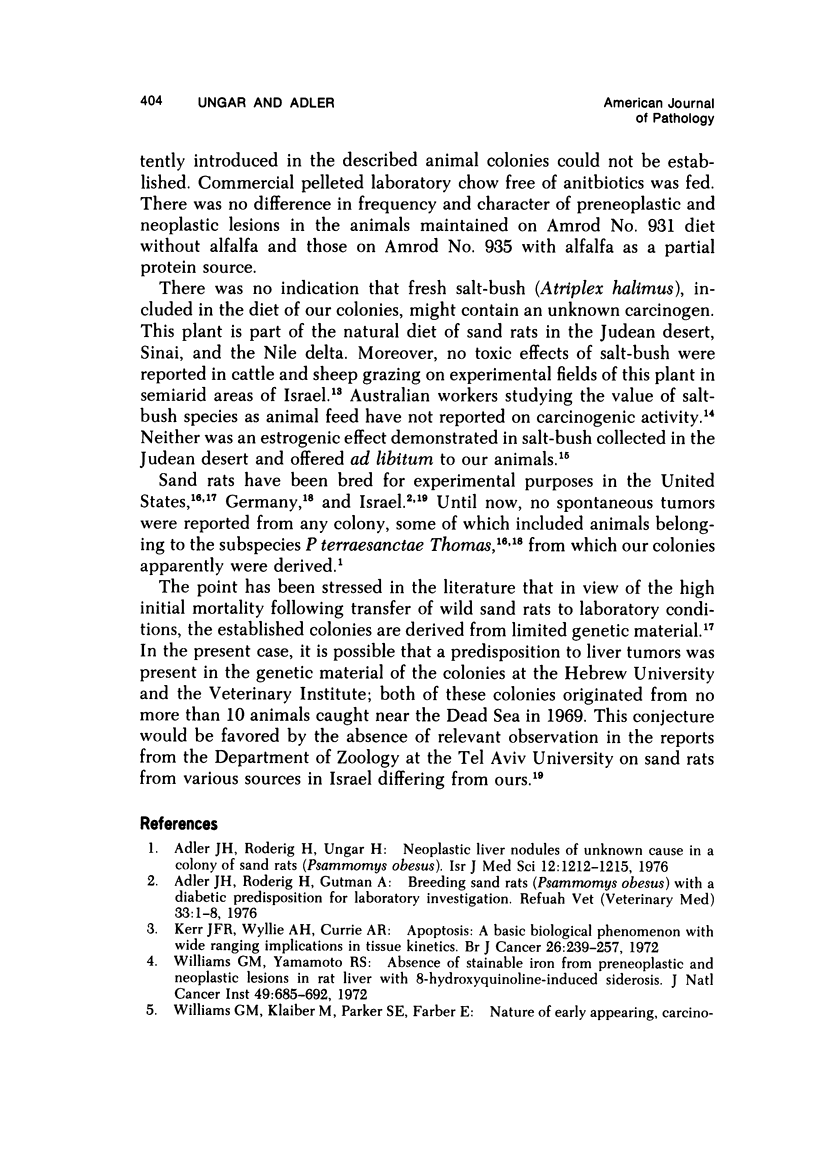
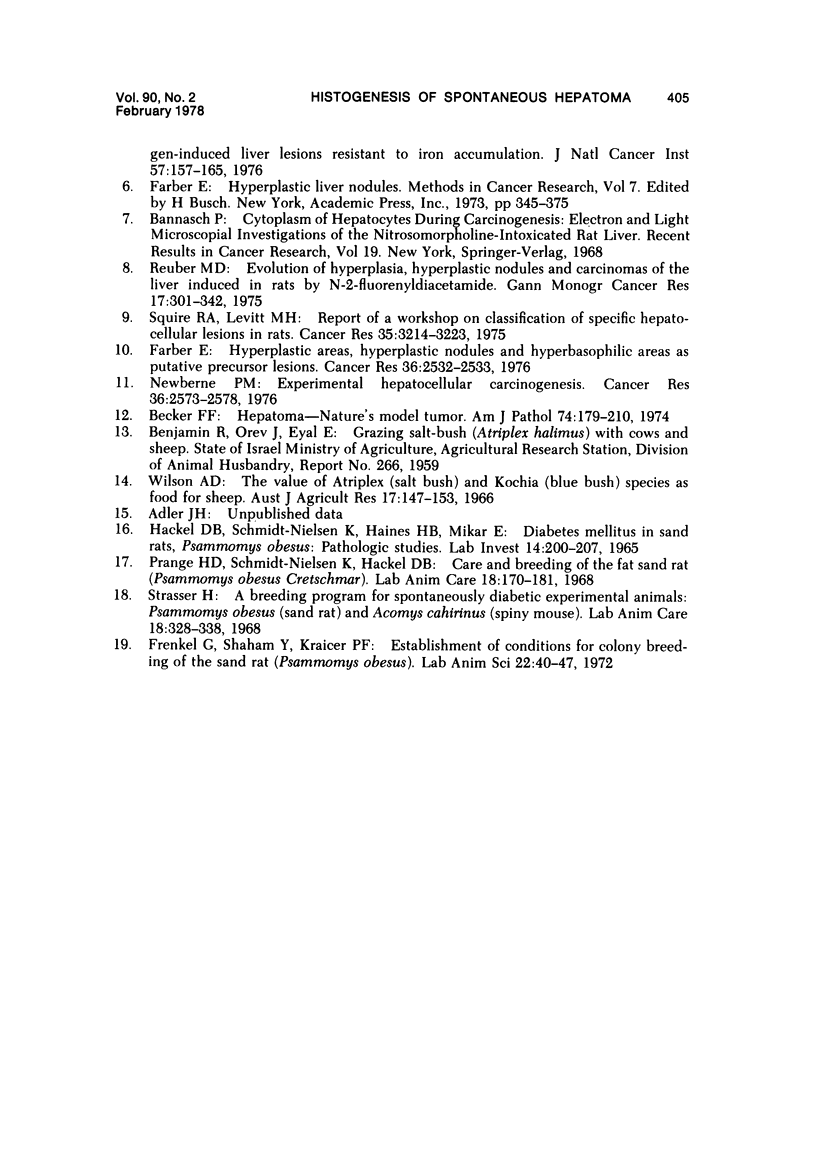
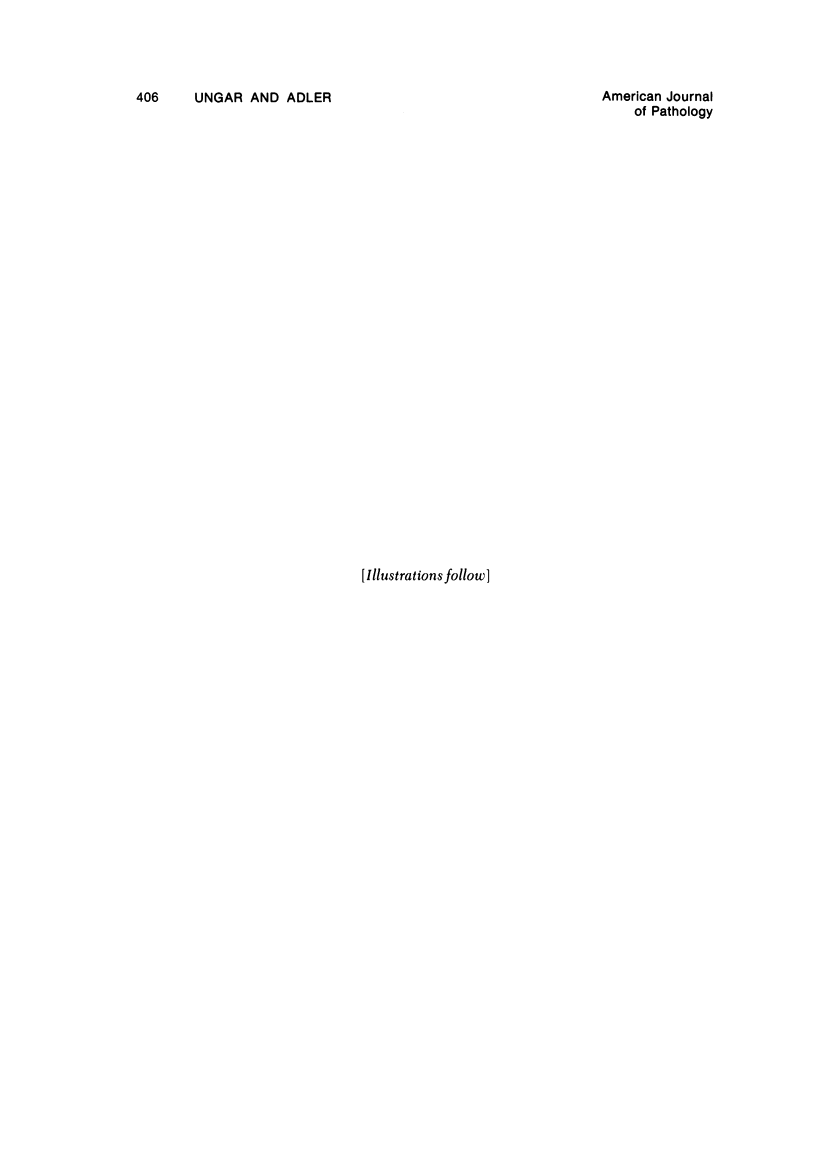
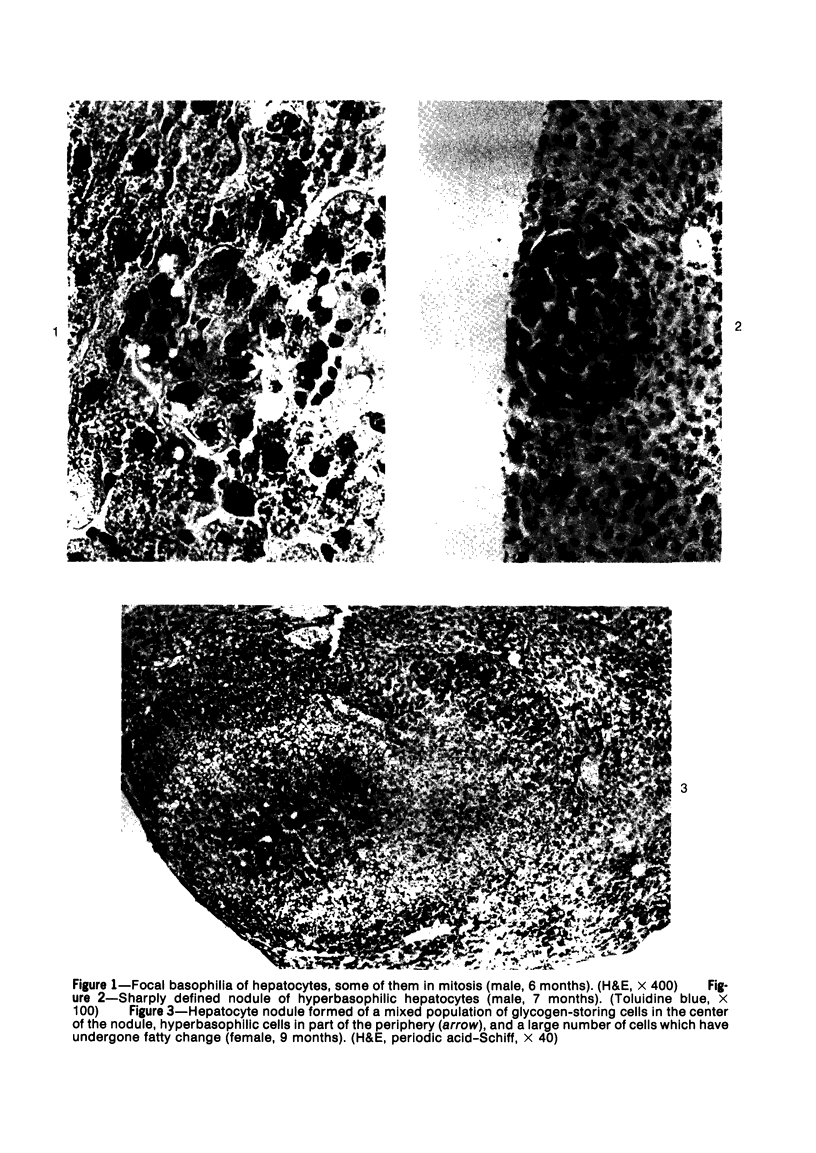
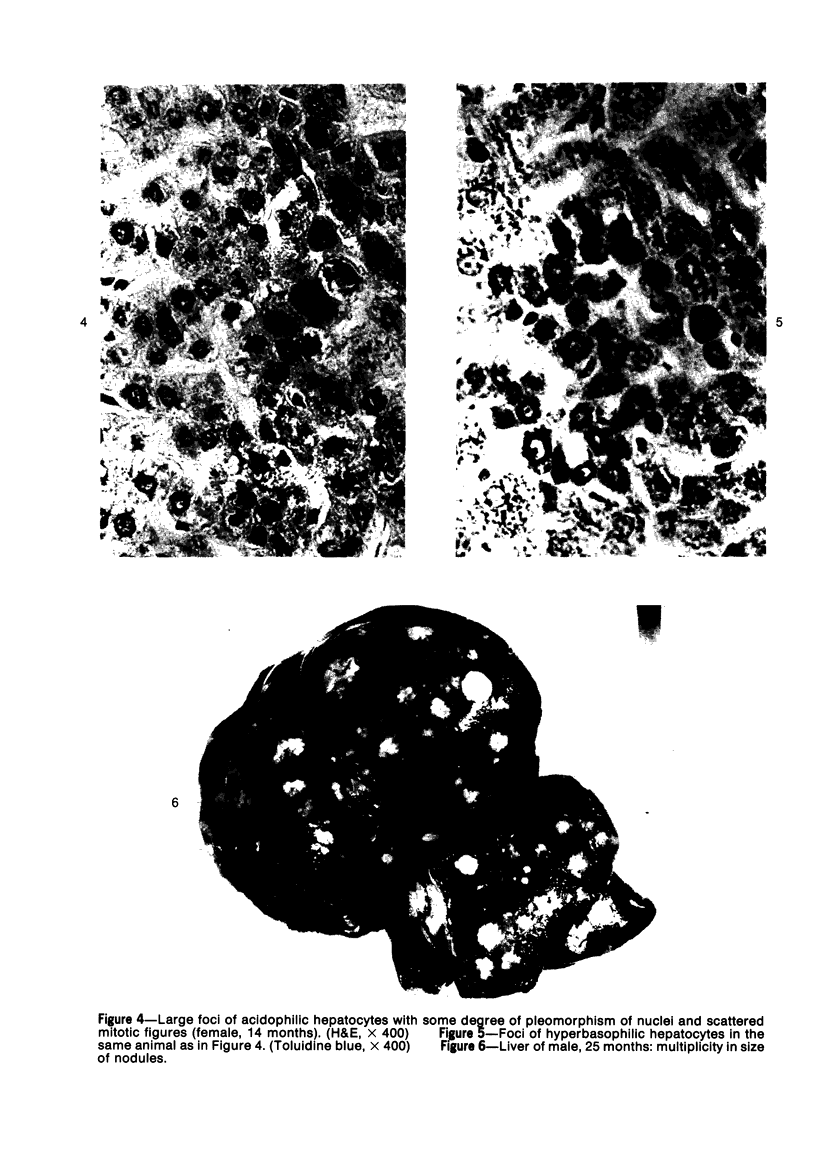
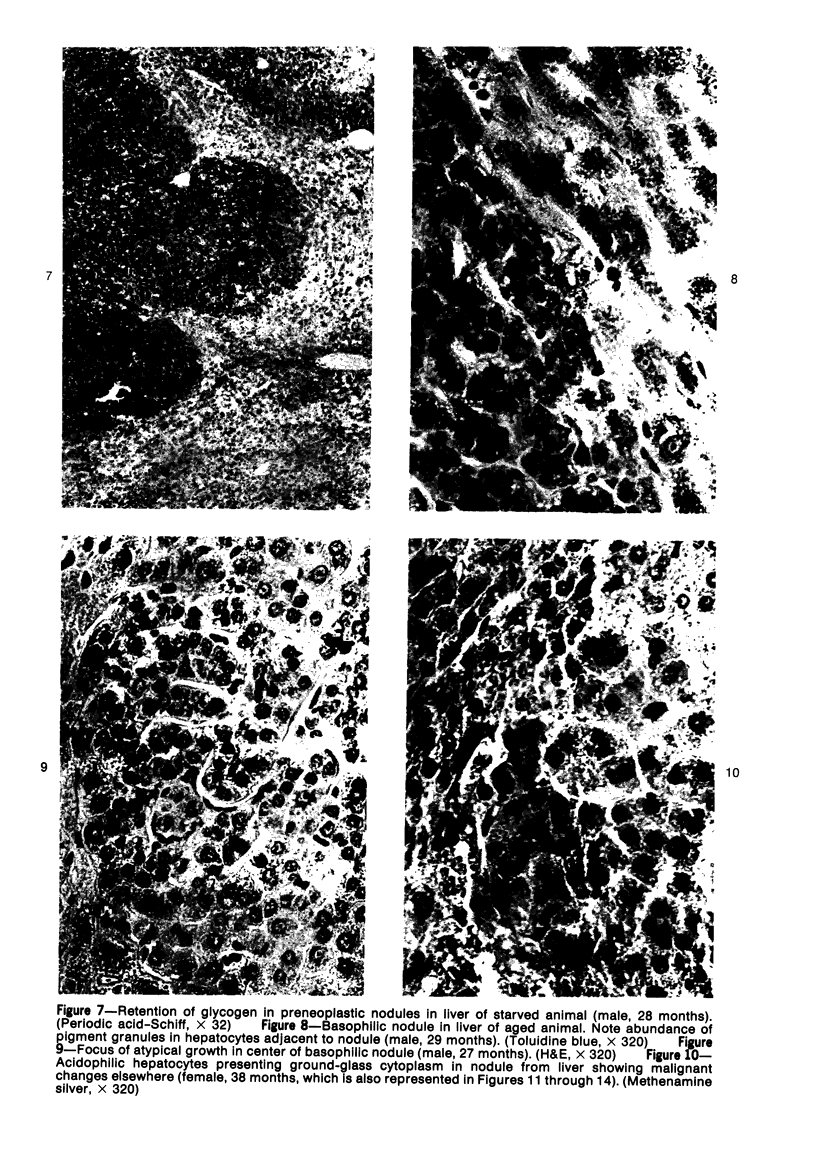
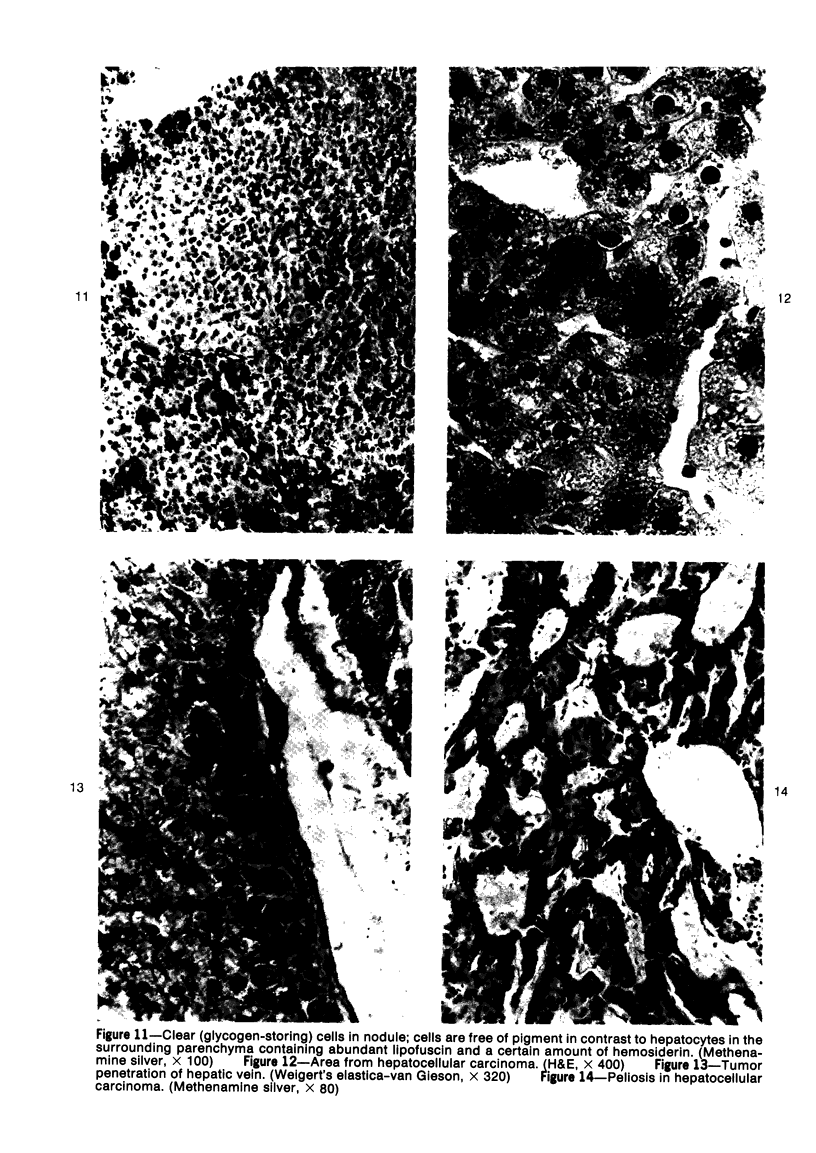
Images in this article
Selected References
These references are in PubMed. This may not be the complete list of references from this article.
- Adler J. H., Roderig H., Ungar H. Neoplastic liver nodules of unknown cause in a colony of sand rats (Psammomys obesus). Isr J Med Sci. 1976 Oct;12(10):1212–1215. [PubMed] [Google Scholar]
- Becker F. F. Hepatoma--nature's model tumor. A review. Am J Pathol. 1974 Jan;74(1):179–210. [PMC free article] [PubMed] [Google Scholar]
- Farber E. Hyperplastic areas, hyperplastic nodules, and hyperbasophilic areas as putative precursor lesions. Cancer Res. 1976 Jul;36(7 Pt 2):2532–2533. [PubMed] [Google Scholar]
- Frenkel G., Shaham Y., Kraicer P. F. Establishment of conditions for colony-breeding of the sand-rat Psammomys obesus. Lab Anim Sci. 1972 Feb;22(1):40–47. [PubMed] [Google Scholar]
- HACKEL D. B., SCHMIDT-NIELSEN K., HAINES H. B., MIKAT E. DIABETES MELLITUS IN THE SAND RAT (PSAMMOMYS OBESUS). PATHOLOGIC STUDIES. Lab Invest. 1965 Feb;14:200–207. [PubMed] [Google Scholar]
- Kerr J. F., Wyllie A. H., Currie A. R. Apoptosis: a basic biological phenomenon with wide-ranging implications in tissue kinetics. Br J Cancer. 1972 Aug;26(4):239–257. doi: 10.1038/bjc.1972.33. [DOI] [PMC free article] [PubMed] [Google Scholar]
- Newberne P. M. Experimental hepatocellular carcinogenesis. Cancer Res. 1976 Jul;36(7 Pt 2):2573–2578. [PubMed] [Google Scholar]
- Prange H. D., Schmidt-Nielsen K., Hackel D. B. Care and breeding of the fat sandrat (Psammomys obesus Cretzschmar). Lab Anim Care. 1968 Apr;18(2):170–181. [PubMed] [Google Scholar]
- Squire R. A., Levitt M. H. Report of a workshop on classification of specific hepatocellular lesions in rats. Cancer Res. 1975 Nov;35(11 Pt 1):3214–3223. [PubMed] [Google Scholar]
- Strasser H. A breeding program for spontaneously diabetic experimental animals: Psammomys obesus (sand rat) and Acomys cahirinus (spiny mouse). Lab Anim Care. 1968 Jun;18(3):328–338. [PubMed] [Google Scholar]
- Williams G. M., Yamamoto R. S. Absence of stainable iron from preneoplastic and neoplastic lesions in rat liver with 8-hydroxyquinoline-induced siderosis. J Natl Cancer Inst. 1972 Sep;49(3):685–692. [PubMed] [Google Scholar]



